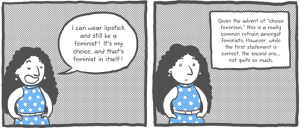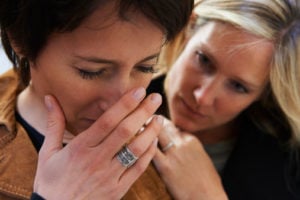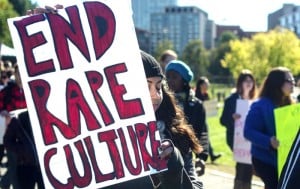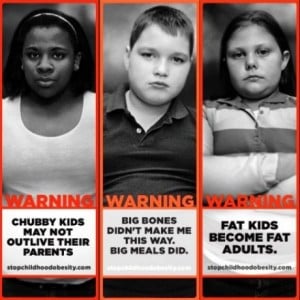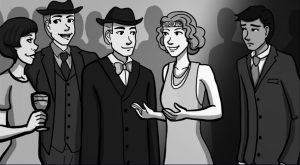
Credit: Alphamom
The idea for this article was prompted by two past incidents that hit close to home — one a public occurrence, and the other a personal conversation.
The first was the untimely death of 15-year-old Hidaya Pendleton of Chicago. She was a victim of a random shooting near her school. In African American vernacular, the black community is sick and tired of our young people dying senselessly.
Often because those who are victims of violence are from poor and working class neighborhoods, many of these children’s deaths tend to be ignored by the mainstream media and do not receive much attention from politicians.
Also, in cases like Hidaya’s, when circumstances of her life appeared to be the typical American story — good schools, active parenting, community involvement, and positive peers — members of these communities feel even more powerless to protect our children.
In Chicago last year, 65 children were killed, due to gun violence alone.
As stated by President Obama: “That’s the equivalent of a Newtown every four months.”
When there is a shooting, especially involving children, like that of Newton, we mourn simultaneously for those young people and our own youth’s deaths. The ones that have gone unacknowledged.
Most of my conversations surrounding Hidaya’s life and death were with teachers, community organizers, and mothers. Yet, it was the first time in my life that I witnessed firsthand mothers and “other mothers” feeling hopeless and defeated.
Our conversations made me toss and turn at night, pondering the future mental health of our youth, including the death of my own brother, who was murdered on the Southside of Chicago in 1999.
The second incident that prompted me to write this article was a brief exchange with my own son, regarding his reaction to the shooting.
After privately discussing the murder, I finally asked my pre-teen son, “How do you feel about the girl being killed?”
The response that followed was certainly unexpected.
In a nonchalant tone, he responded, “There are so many kids getting killed these days, I don’t even think about it anymore.”
Being a formally-trained school social worker, I conscientiously raise my children to be compassionate and to demonstrate empathy for others, especially the less powerful.
Needless to say, my son’s lack of expressed emotions regarding Hidaya’s death made me take pause and contemplate the current cultural climate in which we are raising our children.
In the last decade, American children have been exposed to major military conflicts school-targeted violence, mass shootings, and direct acts of violence involving youth, such as the killing of seventeen-year-old Trayvon Martin and the attack on the fourteen-year-old Pakistani girl, Malala Yousufzai.
Our youth have been exposed to repeated images of violence, which are more of a threat to children’s (and adults’) emotional health than one-time episodes of violence.
An easy response that most experts give to help parents protect children from indirect exposure to violence is “turn off the TV!” However, simply not allowing children to watch television or decreasing their viewing time is not enough to help them cope with violence, besides being not-so-realistic in this age of hypermedia.
We need better approaches to help this generation of youth cope with — and eventually (hopefully!) actively resist — a culture of violence.
In that spirit, I suggest the following strategies for helping children survive these tragic times plaguing our nation.
1. Talk about Feeling Safe and Secure
Have conversations with your child about the meaning of safety.
Explain what being safe looks and feels like.
The conversation can begin by asking your child if she feels safe at home, in school, and playing outside. If she responds that she does not feel safe in a particular setting, ask her to explain what would make her feel safer.
Then, ask her where she feels most safe. Have her explain what makes her feel safe in the place that she named.
For instance, I conducted this activity with my youngest child. She reported feeling safest at home. She responded, “I feel warm at home. A different kind of warm, and I feel safe because we have an alarm on the house. I feel happy.”
Next, close the activity by pointing out to her that the majority of children actually report feeling safe and secure in their homes, neighborhoods, and at school.
Brainstorm what to do if she ever does not feel safe, secure, or “warm.”
These conversations serve to prevent feelings of anxiety, fear, and lack of control.
2. Maintain a Dialogue
Allow your child to participate in age-appropriate, family-centered dialogue on current events, including political topics, like gun control or school safety policies.
Most parents attempt to shelter children from political commentary. However, we are bombarded by political propaganda. It’s on billboards, bumper stickers, video games, and even in schools.
Therefore, it is important that you control what information your children has access to as much as possible, and teach them how to state an informed opinion on matters that will affect them.
When including your child in dialogue on current events, (a) provide background information on the topic (e.g. a teen was shot in Chicago); (b) explain how politicians are discussing the shooting (e.g. our senator supports gun control, but others do not); and, (c) ask his opinion on gun control.
Be sure to discuss with your child how she believes a political decision might affect her or other children.
3. Don’t Over Do It
Do not overexpose children to images and discussions about violence.
Because his brain is rapidly developing and absorbs information like a sponge, too many images or words related to violence, especially images he can somewhat relate to (e.g. a ten-year-old boy, a school setting, etc.), can lead to sensory overload.
You do not want your child overly sensitized to violence, because it can lead to nightmares, anxiousness, sadness, or fantastical thinking.
In this case, a small amount of information goes a long way.
Keep conversations involving media brief and age-appropriate. I would suggest that conversations on violence against children last no more than ten minutes for younger children. Older children may actually deserve more time to process their emotions.
Decide which images are more significant to hone in a point. For example, I showed my twelve-year-old the image of fourteen-year-old Emmitt Till’s disfigured body to hone in the serious consequences of racism. However, I chose not to expose him to pictures of injured children in the conflicts in Syria.
I knew his brain could distance itself from a historical event, like the Till murder, as opposed to the recent and on-going conflict in Syria.
Nevertheless, in all cases, avoid the use of too many visuals or details that might leave residual memories.
4. Follow Up
Lastly, be sure to follow up with your child about any positive outcomes that occurred after a tragedy.
For example, people of nearly every ethnicity, age, religion, and income rallied around justice for Trayvon Martin, where sweatshirt hoodies were worn to show solidarity against racism and injustice against youth.
Similarly, the residents of Columbine soon enough recovered from the tragic event and returned to school. Even more importantly, that particular incident led to national conversations and school-based efforts to combat school bullying.
The intent here is that young people learn that human beings are almost always resilient, and adults do come together to protect and support children.
5. Give Back to the Village
For older children, encourage them to start or participate in programs at school or in the local community that bring awareness to ending violence against children.
For example, have them volunteer at women’s shelters, or raise money for girls in the Middle East or Africa to attend school. People actively involved in change feel more in control of their environment.
Speak with school officials, community organizations, and faith-based organizations. Ask them to participate in hosting discussions that provide youth a space to process their beliefs and feelings about community, media, national, and war-related violence.
To help children cope long-term with exposure to mass violence, it will have to be a village effort. We can foster feelings of agency in young people early on.
The purpose of these suggestions is to help children become less desensitized to violence.
We must provide them with a safe space to heal and recover from the violence that has been surrounding them of late.
It is not enough to shelter children from images of violence. We must also strive to help them become compassionate human beings and advocates against violence, especially violence involving young people.
Violence involving young people and against young people can end by engaging our children early on in civil discourse and non-violence education.
*Our thoughts and prayers go out to those impacted by the recent violence in Boston, Chicago, and Newtown.
[do_widget id=”text-101″]
Dr. Venus E. Evans-Winters is a Contributing Writer for Everyday Feminism and an Associate Professor of Education and Faculty Affiliate of Women and Gender Studies. Her interests are school resilience, urban education reform and policy, critical race theory, and feminism(s). She is the author of Teaching Black Girls: Resiliency in Urban Classrooms as well as several scholarly articles and book chapters. Follow her on Twitter @ileducprof and #BlackEdu.
Search our 3000+ articles!
Read our articles about:
Our online racial justice training
Used by hundreds of universities, non-profits, and businesses.
Click to learn more
Most Read Articles
- « Previous
- 1
- …
- 30
- 31
- 32








